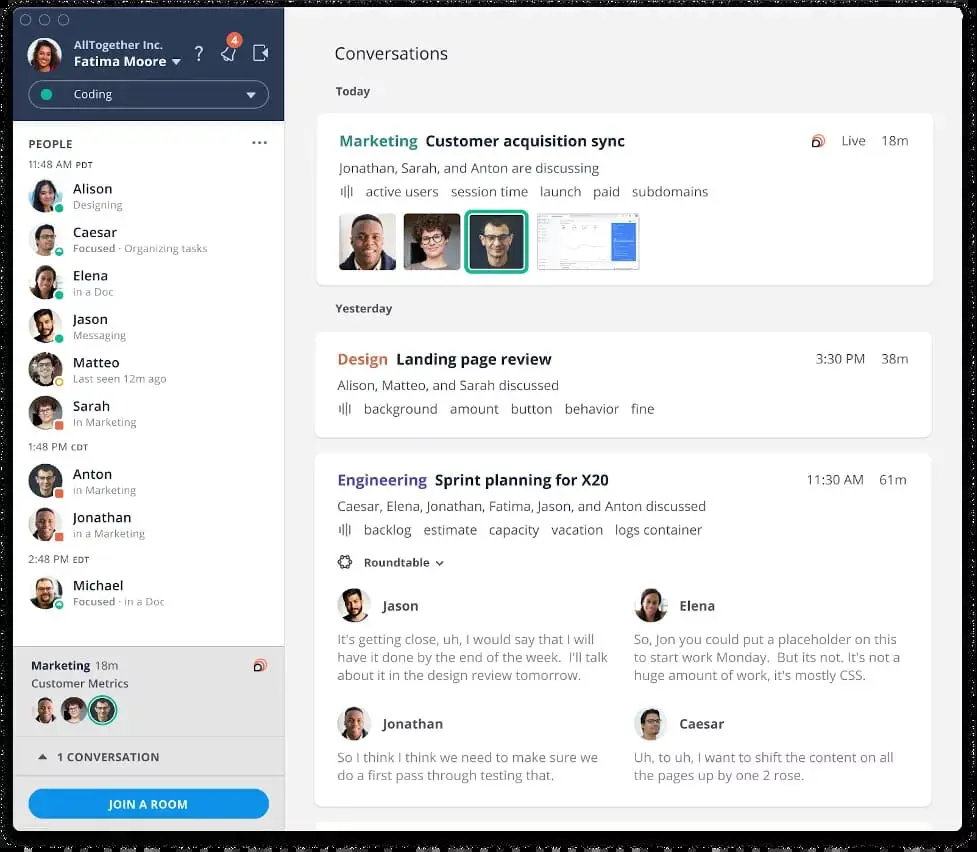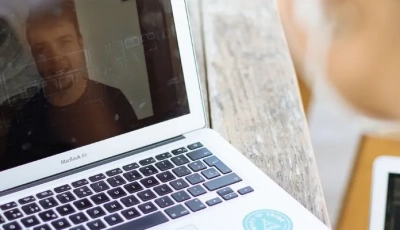To begin, can you tell us about Loop Team?
Loop Team is a virtual office for distributed teams that brings the best parts of working together into an online setting. Loop Team helps teams communicate faster, collaborate as if they were side-by-side, capture and share discussions, and feel more connected.
What remote work challenges is Loop Team trying to solve?
Despite the many benefits of remote work, remote teams and employees report pain points such as:
- Missing casual interactions with teammates
- Lost serendipity
- Reduced team innovation
- Less timely communication and collaboration
- Feelings of loneliness and disconnect
While working physically together has its own advantages, remote work is the future of work and so new tools have emerged to bridge the experience. With Loop Team, we have worked to address those pain-points detailed above by reimagining the best parts of the office experience into a virtual workspace.
Are there differences with today’s remote teams?
We have seen that the post-Covid generation of remote teams are different to pre-Covid teams. Even just 2 years ago when we started developing Loop Team, there were only a handful of 100+ employee remote companies. They were globally distributed and leaned upon asynchronous workflows. Post-Covid teams started in an office and they tend to be in similar time zones.
They tend to have strong bonds formed from their in-office personal relationships and value synchronous (live) communication.
What parts of the physical office do you feel are best and missing for remote teams?
The best way to answer this is to think through the day-in-a-life of someone at an office. When you walk-into an office, you immediately see people. You look at their facial expressions, what they are wearing, how they are carrying themselves. You sit down at your desk and you can see who is around you, who is talking to who, what is someone drinking, what are people working on. As you carry-on through your day, you hear background conversations, you may see notes on a whiteboard or simply stickies left near your desk. As you get up to walk to the snack room, you bump into colleagues and have hallway chat. While back at your desk, you need to ask a quick question so you ask your colleague who just took off their headphones. This day-in-a-life keeps going and going, but the key is that most of this visual and audio communication is lost when remote.
We try to bring these pieces. We show rich presence throughout the workspace. We make connecting with a colleague as simple as a click and as fast as 1 second. We tell you what colleagues are talking about live, presuming they are sharing, so you can join when a topic gets interesting. We show you what your team members were recently working on so you feel connected and so forth.

How is Loop Team different from Slack and Zoom?
We (Loop Team), along with many of our customers, use both Slack and Zoom but they are only part of the solution. With Zoom, there is simply just too much friction to get started and so you often simply don’t connect. With Slack, you don’t get any real sense of presence and so you still feel lonely.
Why did you start Loop Team?
My last company, Tempo AI, was a partially distributed team. We had some team members at our HQ in Menlo Park at Stanford Research Institute, and the rest of the team was broadly distributed across the United States, Canada, Argentina, India, etc.
After Tempo’s acquisition by Salesforce and after I had left, I would periodically check-in with my former colleagues. They reported feeling disconnected and needing to fly to the Salesforce office monthly to stay in the loop. At Tempo, we had a 24/7 video watercooler which helped team members feel connected but it didn’t scale as the team grew. This is how the idea of Loop Team was formed — can we make team members feel connected while distributed.
For teams thinking about remote communication, what best practices or other can you recommend?
Much of the Zoom fatigue is happening because teams are replacing in-person hallway chats with 30 minute meetings. Instead, create office hours where everyone should try to be online and available. During these overlapping hours, allow team members to drop-in, in an ad-hoc fashion. It’s been determined that high performing, successful remote teams communicate in bursts, and set time for more deep focused, uninterrupted work hours based on personal schedules thereafter.
Independent of above, making sure you have regular and frequent 1:1s and time for play (e.g. trivia Fridays or other) are important.
Tell me more about games, what does your team play?
Games are a great way to put work away and have some fun. At Loop Team, every Friday after our weekly All Hands, we pick a game to play together. Some of our go-to games right now are Codenames, Skribbli.io and Jackbox.tv.
How can teams try Loop Team?
Just head to www.loopteam.co and create your team’s free workspace in less than two minutes.






